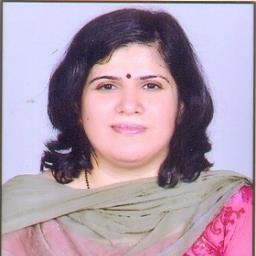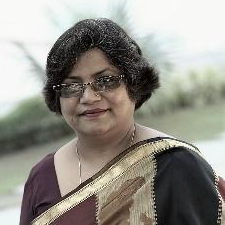International Journal of Image, Graphics and Signal Processing (IJIGSP)
IJIGSP Vol. 10, No. 12, 8 Dec. 2018
Cover page and Table of Contents: PDF (size: 714KB)
Horizontal Vertical Diagonal Gabor Binary Pattern Descriptor with PLDA for Pose-Invariant Face Recognition
Full Text (PDF, 714KB), PP.47-55
Views: 0 Downloads: 0
Author(s)
Index Terms
Face Pose Recognition, Probabilistic Linear Discriminant Analysis (PLDA), Gabor Linear Binary Pattern, Pose Recognition
Abstract
Face recognition is one of the conventional problems in computer vision. Its recognition rate falls steeply when the images are captured in an unconstrained environment. One of the fundamental issues that creep into unconstrained environment capturing is that of the face pose variation. Due to face pose variation, occlusion of crucial features takes place. Occlusion may lead to information loss in the face descriptor which describes the face appearance. In this paper, we propose learning-based descriptor that combines horizontal, vertical and diagonal pattern of blocks generated from the convolution of face image with Gabor filter bank. To use only discriminative features, Probabilistic Linear Discriminant Analysis (PLDA) is used. The fusion of non-uniform texture based descriptor along with the PLDA approach aids in retaining enough of discriminative information to overcome the information loss occurring during feature occlusion. Since HVDGBP face descriptor utilizes the fundamental concept of Linear Binary Pattern (LBP) henceforth it helped in meeting low processing demands and ease of computing characteristic required for good face descriptors. Comprehensive comparative performance analysis of the robustness of the proposed face descriptor to withstand pose variations is presented. UMIST and AT&T Database is used for experimental analysis.
Cite This Paper
Kumud Arora, Poonam Garg, "Horizontal Vertical Diagonal Gabor Binary Pattern Descriptor with PLDA for Pose-Invariant Face Recognition", International Journal of Image, Graphics and Signal Processing(IJIGSP), Vol.10, No.12, pp. 47-55, 2018. DOI: 10.5815/ijigsp.2018.12.06
Reference
[1]T. Ojala, M. Pietikäinen, and D. Harwood, “A comparative study of texture measures with classification based on feature distributions,” Pattern Recognition vol.29 (1) pp. 51–59, 1996. doi:10.1016/0031-3203(95)00067-4.
[2]T. Ahonen, A. Hadid, and M. Pietikainen, “Face description with local binary patterns: Application to face recognition,” IEEE transactions on Pattern Analysis and machine intelligence, vol. 28 (12), pp.2037–2041, 2006.
[3]T. Ahonen, J. Matas, C. He, and M. Pietikäinen, “Rotation invariant image description with local binary pattern histogram fourier features,” In Scandinavian Conference on Image Analysis, Springer, Berlin, Heidelberg, 2009.
[4]B. Zhang, Y. Gao, S. Zhao, and J.Liu, “Local derivative pattern versus local binary pattern: face recognition with high-order local pattern descriptor,” IEEE transactions on Image Processing, vol.19 (2), pp.533–544, 2010.
[5]J.Trefný, and J.Matas, “Extended set of local binary patterns for rapid object detection,” In Computer Vision Winter Workshop, pp. 1-7, 2010.
[6]D.Huang, C.Shan, M. Ardabilian, Y. Wang, and L.Chen, “Local binary patterns and its application to facial image analysis: a survey,” IEEE Transactions on Systems, Man, and Cybernetics, Part C (Applications and Reviews), vol. 41(6), pp.765-781, 2011.
[7]S.R. Dubey and S.Mukherjee, “LDOP: Local Directional Order Pattern for Robust Face Retrieval,”,2018. doi: arXiv preprint :1803.07441.
[8]S. ul Hussain, T. Napoleon, and F. Jurie, “Face recognition using local quantized patterns,” In BMVC, 2012.
[9]L.Liu, S.Lao, P.Fieguth, Y. Guo, X. Wang, and M.Pietikainen, “The Median robust extended local binary pattern for texture classification,” IEEE Transactions on Image Processing, vol. 25(3), pp. 1368–1381, 2016.
[10]L.Tian, C.Fan, and Y.Ming, “Learning iterative quantization binary codes for face recognition,” Neurocomputing, vol. 214, pp.629-642,2016
[11]J.G. Daugman, Uncertainty relation for resolution in space, spatial frequency, and orientation optimized by two-dimensional visual cortical filters, JOSA A, vol. 2(7), pp. 1160–1169, 1985.
[12]Shen, L., Bai, L. and Fairhurst, M., “Gabor wavelets and general discriminant analysis for face identification and verification,” Image and Vision Computing, 25(5), pp. 553–563, 2007.
[13]C.A.Perez, L.A. Cament, and L.E. Castillo, “Local matching Gabor entropy weighted face recognition,” In Automatic Face & Gesture Recognition and Workshops, pp.179-184, 2011.
[14]M.Haghighat, S. Zonouz, and M. Abdel-Mottaleb, “Identification Using Encrypted Biometrics,” In International Conference on Computer Analysis of Images and Patterns, Springer, Berlin, Heidelberg, pp. 440-448, 2013.
[15]S.K. Jami, S.R. Chalamala, and K.R. Kakkirala, “Cross Local Gabor Binary Pattern Descriptor with Probabilistic Linear Discriminant Analysis for Pose-Invariant Face Recognition,” In Computer Modelling & Simulation (UKSim), UKSim-AMSS 19th International Conference. IEEE, pp. 39–44, 2017.
[16]S.Ioffe, “Probabilistic linear discriminant analysis,” In European Conference on Computer Vision, Springer, Berlin, Heidelberg, pp. 531-542 2007.
[17]A.Sizov, K.A.Lee, and T.Kinnunen, “Unifying probabilistic linear discriminant analysis variants in biometric authentication,” In Joint IAPR International Workshops on Statistical Techniques in Pattern Recognition (SPR) and Structural and Syntactic Pattern Recognition (SSPR). Springer, Berlin, Heidelberg, pp.464-475, 2014.
[18]S.T.Roweis, and L.K. Saul, “Nonlinear dimensionality reduction by locally linear embedding,” science, vol. 290(5500), pp.2323-2326, 2000.
[19]S.J. Prince and J.H. Elder, “Probabilistic linear discriminant analysis for inferences about identity,” In Computer Vision, ICCV 2007. IEEE 11th International Conference, pp.1-8, 2007.
[20]S.R. Zhou, J.P. Yin and J.M. Zhang, “Local binary pattern (LBP) and local phase quantization (LBQ) based on Gabor filter for face representation,” Neurocomputing, vol. 116, pp.260-264, 2013.
[21]UIMST Face Database; retrieved from:https://www.sheffield.ac.uk/eee/research/iel/research/face
[22]AT&T-The Database of Faces (formerly "The ORL Database of Faces), retrieved from http://www.cl.cam.ac.uk/research/dtg/attarchive/facedatabase.html

